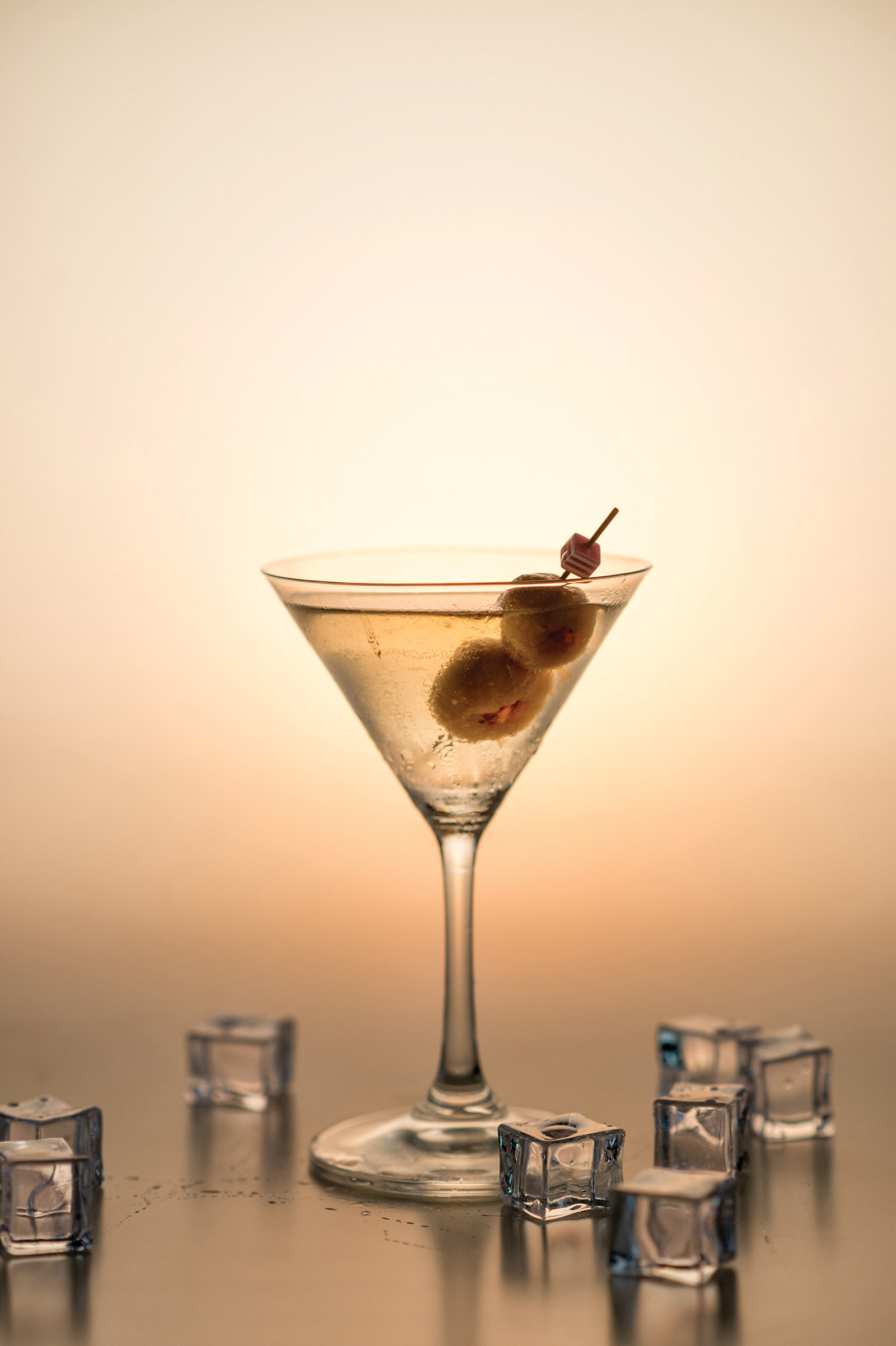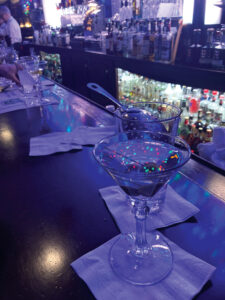In Search of the Perfect Vodka Martini

Looking for perfection is a fool’s errand. However, that does not stop some of us from constantly searching for the model in any number of subjects.
For example, are you searching for the perfect recording of the Sibelius Symphony 7? Easy, Finnish conductor Leif Segerstam wins my award. How about the ideal recording of Beethoven’s Piano Sonata No. 23 in F minor, Op. 57, the “Appassionata?” Another no-brainer for me – Glenn Gould.
Naturally, actually “finding” perfection in anything does not mean another perfect example cannot be discovered. A number of years ago, a friend asked, “Why on earth do you have nineteen recordings of the Beethoven 9th Symphony?” I responded simply by saying it was because I had not yet found a twentieth recording to compare to the nineteen. Probably bad news for my friend Leif and Glenn Gould (as if he would care), but I eventually will find a Sibelius and Appassionata that will impress me even more. Sorry, guys.
This leads me to this month’s Intown subject, “In Search of the Perfect Vodka Martini.”
For starters, there are unlimited ways to create a martini. But the classic martini consisted of either gin or vodka, dry vermouth, ice, and olives or a twist of lemon. I had several awful experiences with gin in my youth, so I have favored the vodka martini.
It is essential to know that the proportions of the critical ingredients vary from bartender to bartender. The basic recipe, however, usually calls for two ounces of vodka, one-ounce dry vermouth, ice, and, very importantly, when using olives, it must be one or three olives on a toothpick, NEVER TWO! No rules for the lemon twist. Then there is the question of “shaken or stirred.” Either method works, but not to offend Agent 007. I prefer mine stirred.
So let’s begin with some recent search results –
 My wife, Lisa Powell, and I were in New York City a few years ago. Lisa recommended a classic old steakhouse, Donohue’s, on the upper east side of Lexington. A tiny and unassuming location with a dry cleaning establishment next door, Donohue’s has a shotgun setting, a long bar with fourteen barstools, and a small dining area in the rear, seating no more than twenty or so. Reservations are mandatory, and, since we had none, we entered and looked to take a couple of seats at the bar. Unfortunately, behind each of the filled fourteen barstools was a customer waiting impatiently for the person in front of them to leave. Lisa and I edged behind the now twenty-eight bar customers and waited for some stools to open up. Once seated, Tom, the bartender, asked us what we wanted to drink.
My wife, Lisa Powell, and I were in New York City a few years ago. Lisa recommended a classic old steakhouse, Donohue’s, on the upper east side of Lexington. A tiny and unassuming location with a dry cleaning establishment next door, Donohue’s has a shotgun setting, a long bar with fourteen barstools, and a small dining area in the rear, seating no more than twenty or so. Reservations are mandatory, and, since we had none, we entered and looked to take a couple of seats at the bar. Unfortunately, behind each of the filled fourteen barstools was a customer waiting impatiently for the person in front of them to leave. Lisa and I edged behind the now twenty-eight bar customers and waited for some stools to open up. Once seated, Tom, the bartender, asked us what we wanted to drink.
Lisa ordered an Old Fashioned, and I asked for a vodka martini. Tom made the Old Fashioned and served Lisa, and then he went to work on mine. Filling a shaker glass with ice, he proceeded to pour probably six shots of Tito’s into the glass. Then a touch of vermouth and an even smaller squeeze of olive juice. He then set a martini glass in front of me. Ir was not the size of a martini glass that one finds now nearly everywhere being quite large, but the old-fashioned type, much smaller. Tom began shaking. I wondered how six ounces of martini would fit in such a small glass, and my fears were confirmed when he poured out a tiny portion. Then, I was pleasantly relieved when Tom set the shaker glass and strainer next to my small glass. It was me against the ice melting in the shaker, and the race was on. I looked down the bar at the other twelve customers and saw at least eight such setups! This solved the mystery of why so many customers begged for a seat. Someone once asked me how much it cost and I said that I did not know but that the presentation and final product were perfect so who cared? Oh, yes – three olives!!!
 Last summer, Lisa and I were in northern Italy. We started in Venice and went to another Hemingway haunt, “Harry’s Cipriani Bar.” We were pretty surprised to see a bar that would only seat four customers. At Harry’s, they feature two martinis – gin or vodka. Our bartender explained that the “regular” martini was made with a ratio of ten parts gin or vodka to one part vermouth. They also offer what they call the “Montgomery” martini, which is made with a ratio of fifteen to one as English Field Marshall Montgomery while invading Italy in WWII, supposedly refused to go into battle without fifteen of his troops to one of the enemy! Interestingly, Harry’s martinis were premade and retrieved from a pitcher in the icebox poured into a small glass. No shaking, no stirring, no olives or twists. Delicious, however.
Last summer, Lisa and I were in northern Italy. We started in Venice and went to another Hemingway haunt, “Harry’s Cipriani Bar.” We were pretty surprised to see a bar that would only seat four customers. At Harry’s, they feature two martinis – gin or vodka. Our bartender explained that the “regular” martini was made with a ratio of ten parts gin or vodka to one part vermouth. They also offer what they call the “Montgomery” martini, which is made with a ratio of fifteen to one as English Field Marshall Montgomery while invading Italy in WWII, supposedly refused to go into battle without fifteen of his troops to one of the enemy! Interestingly, Harry’s martinis were premade and retrieved from a pitcher in the icebox poured into a small glass. No shaking, no stirring, no olives or twists. Delicious, however.
A couple of days later, we were in Verona. As Lisa shopped, I begged off due to the extreme heat and returned to our hotel, which had a cozy lobby bar. I befriended the bartender, Franco, and asked him to make me the perfect martini. What he did was amazing. Starting with a pitcher of ice, he stirred it for at least one minute to get the pitcher cold. Then he added a scant shot of vermouth and went back to stirring. Another two minutes passed, and he strained out the resulting water and vermouth, knowing that the remaining ice had now obtained the slight influence of the vermouth. Adding vodka, four shots or so, it was back to another minute of stirring. Then, he brought me my glass, the large version, and discarded the ice in it since the beginning of the operation. Straining and pouring into my chilled glass and adding a twist of lemon, I realized that Franco had indeed made the perfect vodka martini. However, being leery of my decision and fearing that walking in the Verona heat had affected my martini sensibilities, I felt obliged to ask Franco to make another. This time I filmed the entire sequence for posterity. I was correct; the Perfect Vodka Martini had just been made (twice).
While one might conclude that my search is over, I will continue challenging bartenders in my never-ending quest for martini excellence. Wish me luck.






















